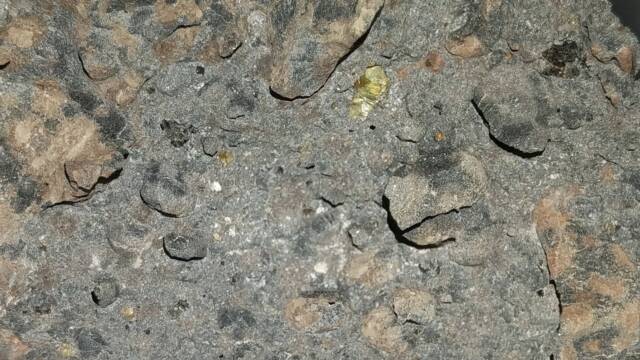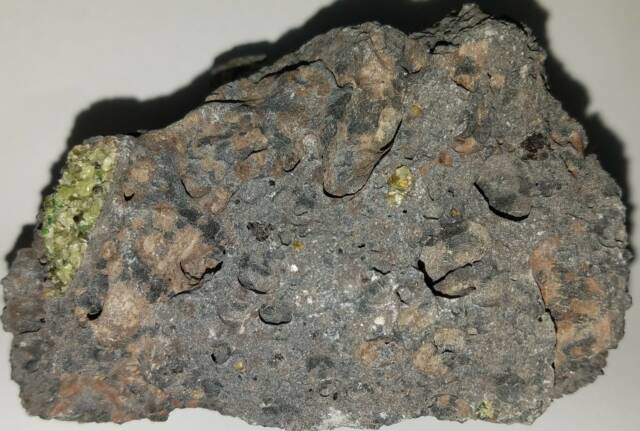Basanite

Photographed by Michael P. Klimetz
[Vesicular with Peridotite Xenoliths]
Early Pleistocene
Gila Bend
Maricopa County
ARIZONA

Photographed by Michael P. Klimetz
[Vesicular with Peridotite Xenoliths]
Early Pleistocene
Gila Bend
Maricopa County
ARIZONA

Photographed by Michael P. Klimetz
[Vesicular with Peridotite Xenoliths]
Early Pleistocene
Gila Bend
Maricopa County
ARIZONA

Photographed by Michael P. Klimetz
[Vesicular with Peridotite Xenoliths]
Early Pleistocene
Gila Bend
Maricopa County
ARIZONA
Basanite is an igneous, volcanic (extrusive), mafic rock with an aphanitic to porphyritic texture. It is usually comprised of abundant feldspathoids (nepheline or leucite), plagioclase, and augite, together with olivine and lesser iron-titanium oxides such as ilmenite and magnetite-ulvospinel. Alkali feldspar may be present but is subordinate. Clinopyroxene (augite) and olivine are common as phenocrysts and as a matrix phase. The augite characteristically contains significantly greater titanium, aluminum and sodium than that in typical tholeiitic basalt. Quartz is absent, as are orthopyroxene and pigeonite. Basanites are low in silica (42 to 45% SiO2) and high in alkalis (3 to 5.5% Na2O and K2O) compared to basalt, which typically richer in SiO2. Basanites occur both in continental and oceanic tectonic settings as products of hotspot volcanism.